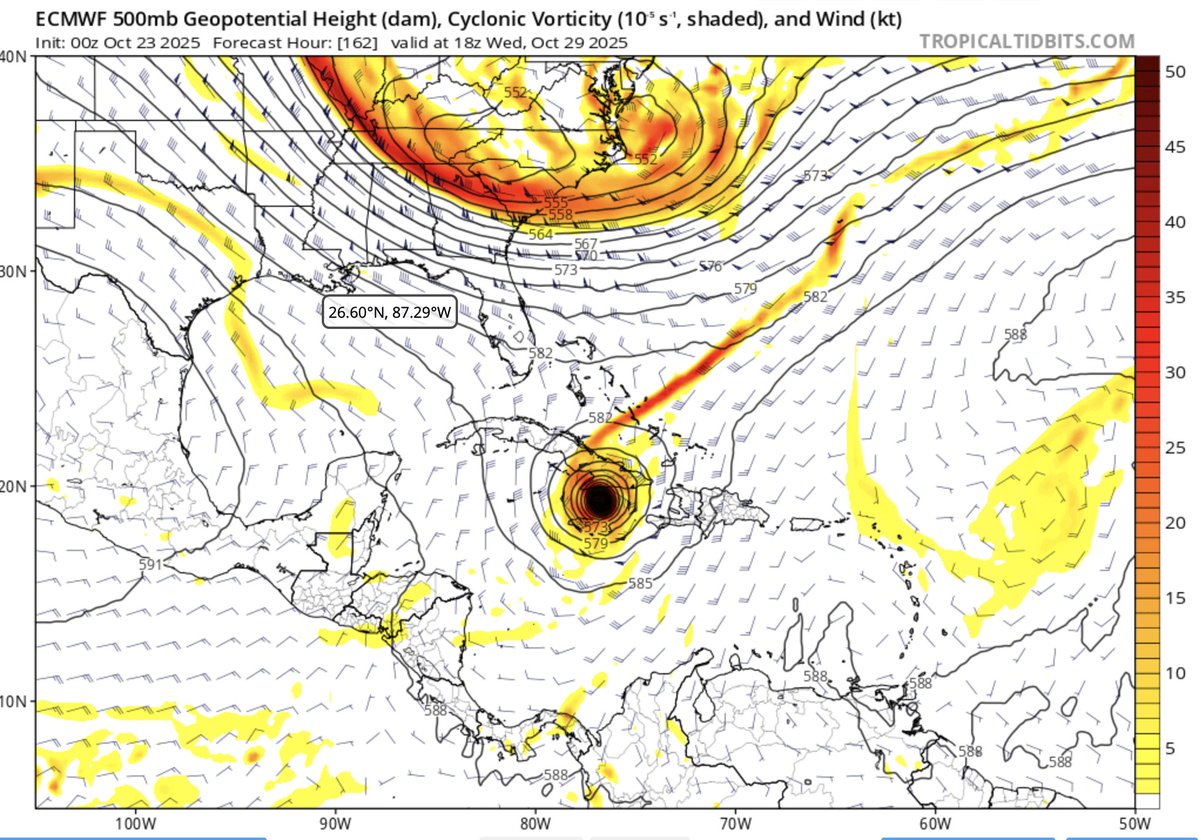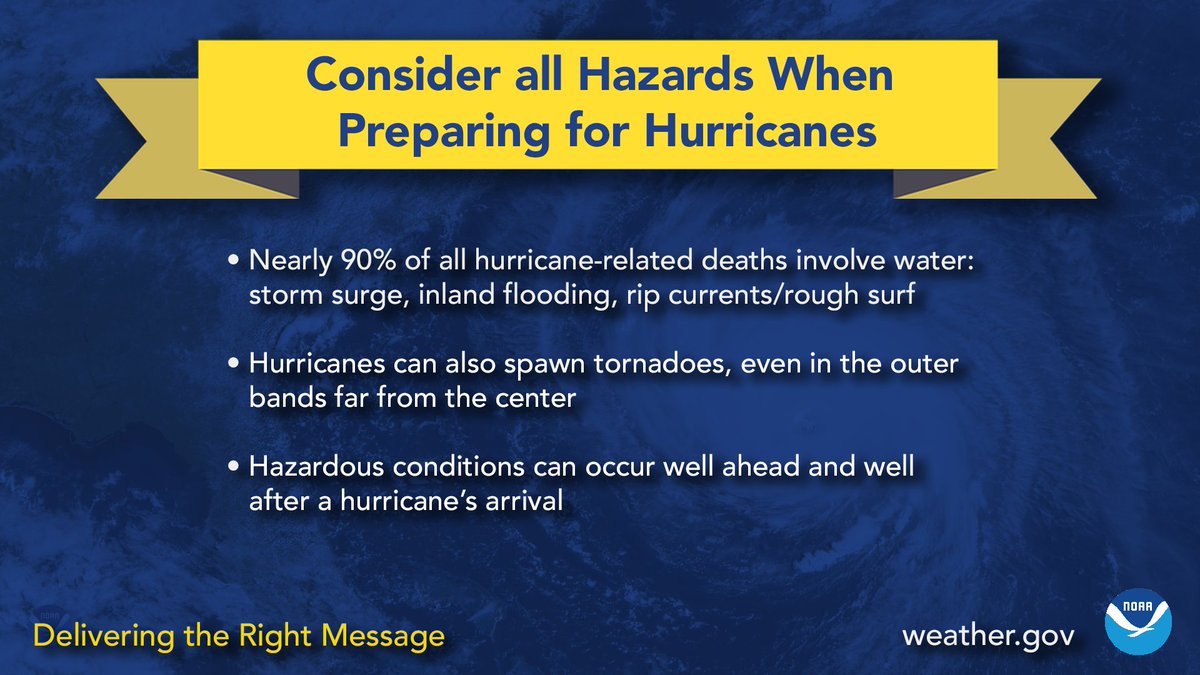Jacksonville, Fl. — THE TROPICS:
***** ALWAYS CHECK & RE-CHECK THE LATEST FORECAST & UPDATES! ****
Tropics threats/impacts for Jacksonville/NE Florida/SE Georgia: None
The Atlantic Basin Overview:
The Atlantic hurricane season is June 1st through Nov. 30th.
(1) Hurricane WARNING:Jamaica
Hurricane WATCH: Southwestern peninsula of Haiti from the border with the Dominican Republic to Port-Au-Prince... Cuban provinces of Granma, Santiago de Cuba, Guantanamo, and Holguin.
Tropical Storm WARNING:Southwestern peninsula of Haiti from the border with theDominican Republic to Port-Au-Prince.
‘98-L’ - became “Melissa” over the Caribbean Tue. morning & after a long battle with stiff wind shear, was upgraded to a hurricane early Sat. afternoon. The Caribbean is a climatologically favored area as we move through the late Atlantic hurricane season. The development stems from a late season African tropical wave that rolled off Africa last week. The wave had been speeding underneath the strong Bermuda high over the Central & Eastern Atlantic - one of the few waves this hurricane season that has taken the “low road” & come to a screeching halt over the Central Caribbean. With continued weak steering currents, Melissa will continue to crawl for a couple of days before a turn north & northeast late in the weekend/early in the week. The pulsing & slow organization of Melissa is classic of late season tropical cyclones in or near the Caribbean (Wilma in 2005 pops into my mind immediately though there are many other examples). In the end... I suspect Melissa will become a “major” (Cat. 3+) hurricane which may be a rapid process once the tropical cyclone is well organized.
Model consistency has generally slowly improved after a lot of back & forth the past week or so. The GFS model remains steadfast - & an outlier - in its “east camp” - though slowly trending west with each model run - with a strong hurricane that moves northeast earlier & far to the east of the U.S. then accelerating east/northeast over the Central Atlantic. It appears the GFS is one of the few models giving more credence to a lead trough now over the Western Atlantic. Since Melissa shows few signs of getting truly pulled north or northeast yet, the GFS looks to be an outlier. The European, GoogleDM & Canadian models are much more west & much, much slower. Now that Melissa is becoming more vertically aligned, there should be a slow west, even southwest drift before the turn to the northeast. The greatest impacts *as of right now* appear to be aimed at Jamaica, Eastern Cuba & Haiti... & eventually - early to mid next week - the Southern Bahamas... & by mid to late next week Bermuda could be the recipient of some impacts. Rain may be measured in feet over Hispaniola, Jamaica & eventually Cuba given the very slow movement over the next few days. Melissa could be a particularly severe hit on Jamaica, Cuba, Haiti & even the Southeast Bahamas. Much will depend on any land interaction & when exactly Melissa takes the true turn & move northeast & there will likely be some structural changes at times due to potential eyewall replacement cycles.
The ultimate path & forward speed will largely depend on the strength & positioning (depth/axis) of a strong upper level trough moving into the U.S. through next week - a mainstay of this ‘25 Atlantic hurricane season. This trough may/should also continue to be the U.S. “lucky charm” helping to keep Melissa east of the U.S. The trough will dig into first the Central then Eastern U.S. over the next 5 days. Melissa will wait on the trough to get rather abruptly pulled northeast eventually accelerating northeast over the Atlantic by late next week as the upper level trough swings a strong cold front rapidly into the Western Atlantic. This evolving upper level weather pattern will be complex & almost certainly will result in changes in the exact track forecast in the coming days. But indications remain for a tropical cyclone that stays a good distance south & east of Florida & the entire Eastern U.S. seaboard. The upper level trough & its position to the northwest of Melissa will also aid in the intensification of Melissa thanks to upper level divergence over what should become a hurricane - a chimney-like effect that helps the storm become well ventilated aloft (many examples but “Michael” in 2018 is a poster child of sorts).





GoogleDM + European models:
The upper level (500mb/~30,000 ft.) forecast from the European model for next Wed., Oct. 29 showing a deepening trough digging over the Eastern U.S. The axis of the upper trough looks to be far enough east to guide Melissa’s movement from the Caribbean to SW Atlantic then northeast over the Atlantic well east of the U.S. & may also play a significant role in Melissa’s eventual strengthening:
Microwave satellite imagery from CIMSS (Cooperative Institute for Meteorological Satellite Studies):



‘Velocity potential anomalies’ below. shows “Rising” air (green lines) equates with an uptick in overall convection. With rising air, conditions are generally more favorable for tropical development. Where there are brown lines, the air is generally sinking & is often less conducive to tropical cyclones (though not impossible to have development).

The “Buresh Bottom Line”: Always be prepared!.....First Alert Hurricane Preparation Guide... City of Jacksonville Preparedness Guide... Georgia Hurricane Guide.
STAY INFORMED: Get the * FREE * First Alert Weather app
FREE NEWS UPDATES, ALERTS: Action News Jax app for Apple | For Android
WATCH “Preparing for the Storm”
WATCH “The Ins & Outs of Hurricane Season”
READ the First Alert Hurricane Center “Preparation Guide”
LISTEN “First Alert Weather: Preparing for the Storm”
Federal Alliance for Safe Homes (FLASH) * here *.
REMEMBER WHEN A TROPICAL STORM OR HURRICANE IS APPROACHING: Taping windows is *not* recommended & will not keep glass from breaking. Instead close curtains & blinds.
Realize the forecast cone (”cone of uncertainty”) is the average forecast error over a given time - out to 6 days - & *does not* indicate the width of the storm &/or where damage might occur.
The map below shows the *average* time for a tropical wave coming off Africa to travel west & northwest. Only about 1 in 5 tropical waves - on average - become a tropical cyclone of some sort (depression/storm/hurricane):
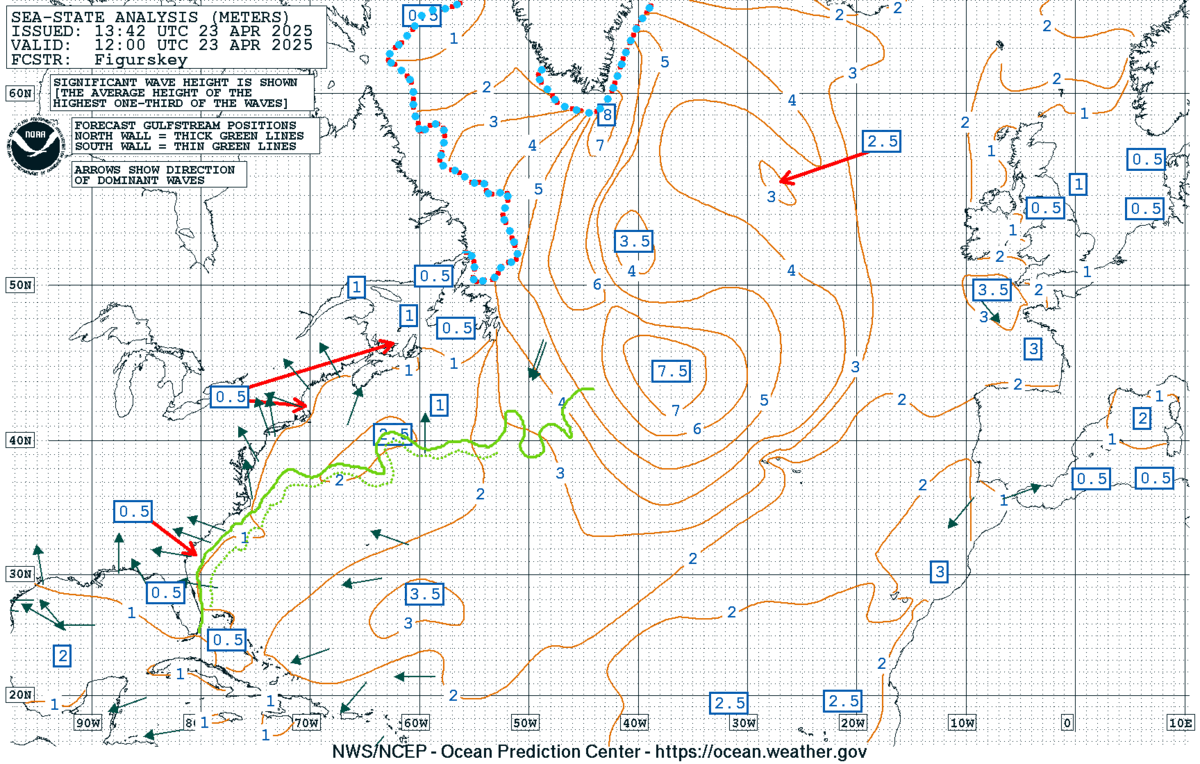
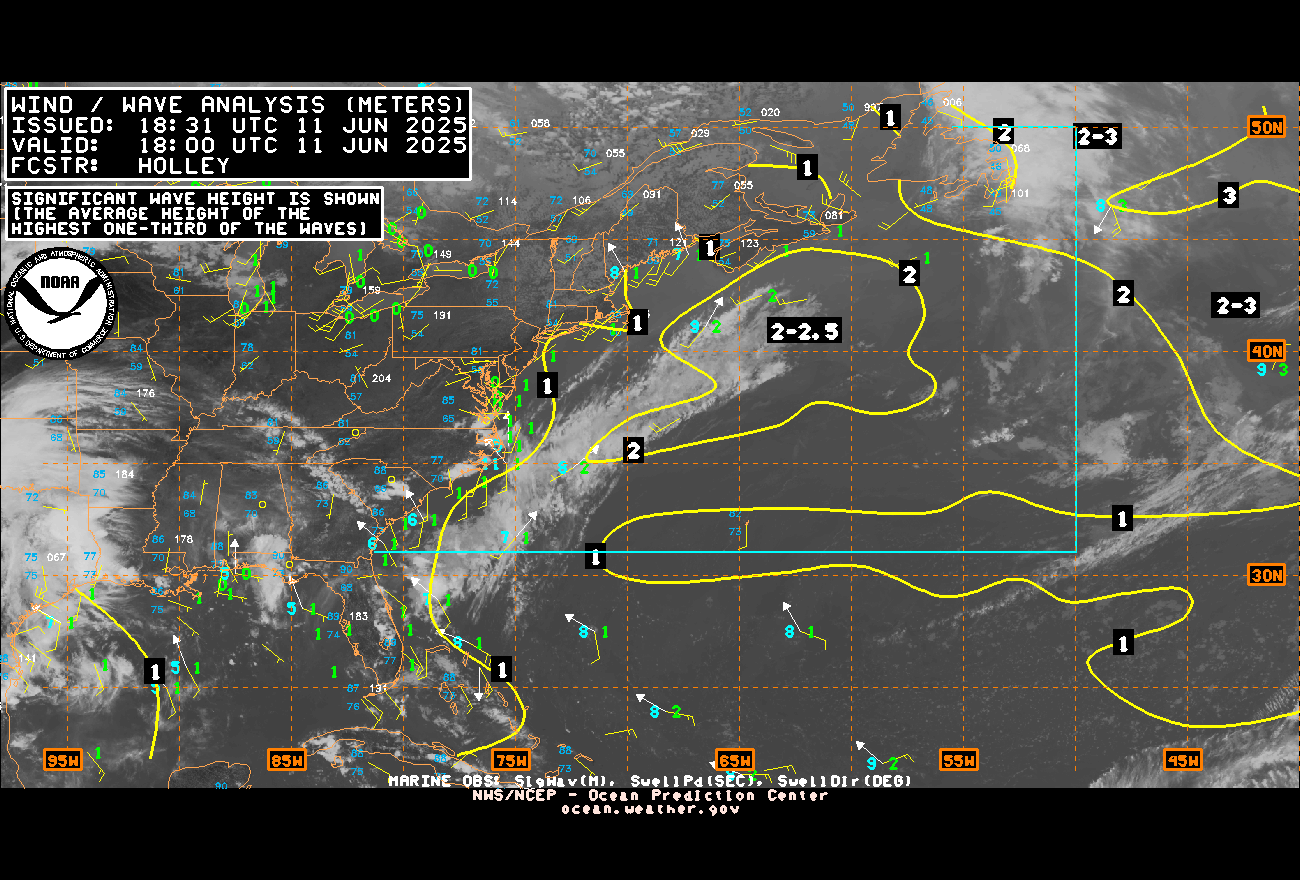




Water vapor loop (dark blue/yellow is dry mid & upper level air):

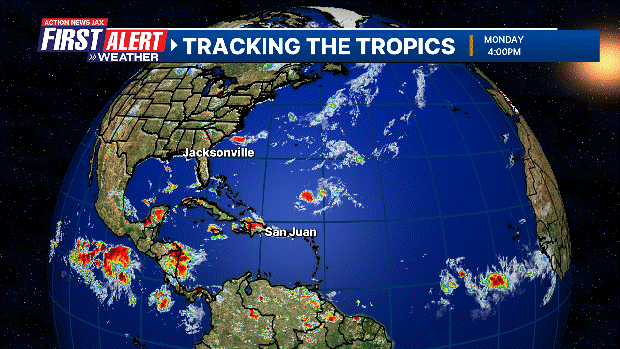
October Atlantic tropical cyclone origins:
Averages below based on climatology for the Atlantic Basin for October:
Wind shear (red - strong shear; green - low shear). Shear is typically strong to start the hurricane season:




Saharan dust spreads west each year from Africa driven by the prevailing winds (from east to west over the Atlantic). Dry air = yellow/orange/red/pink. Widespread dust is indicative of dry air that *can* interfere with the development of tropical cyclones. However, sometimes “wanna’ be” waves will just wait until they get to the other side of - or away from - the dust plume then try to develop if other conditions are favorable (we saw this with Beryl & Debby last year). It’s my personal opinion that there is way too much “hoopla” about the presence of Saharan dust & how it relates to tropical cyclones. In any case, the peak of Saharan dust typically is in June & July, & we are indeed seeing a large “blobs” of Saharan dust over the Central & Eastern Atlantic that’s thinning with westward extent but enough of it to make for hazy skies across the Caribbean & - at times - across parts of Florida.
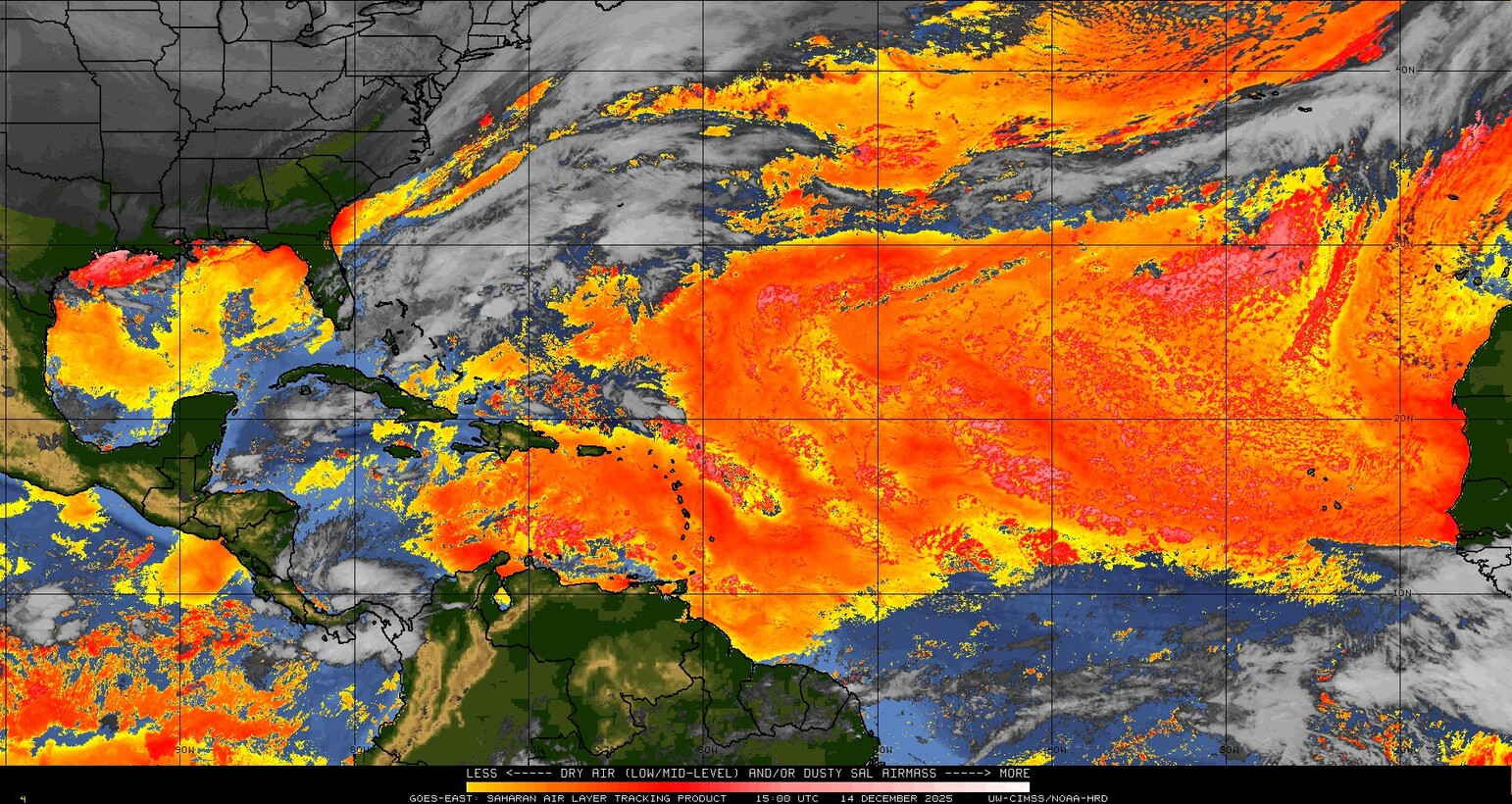
2025 names..... “Nestor” is the next name on the Atlantic list (names are picked at random by the World Meteorological Organization... repeat every 6 years). Historic storms are retired [Florence & Michael in ’18... Dorian in ’19 (the last time this year’s list was used) ... Laura, Eta & Iota in ‘20 ... Ida in ‘21 ... Fiona & Ian in ‘22... no names were retired in ‘23 for the first time since 2014... & Beryl, Helene & Milton last year in 2024]). The WMO decided - beginning in 2021 - that the Greek alphabet will be no longer used & instead there will be a supplemental list of names if the first list is exhausted (has only happened three times - 2005, 2020 & 2021). The naming of tropical cyclones began on a consistent basis in 1953. More on the history of naming tropical cyclones * here *.

Hurricane season climatology:
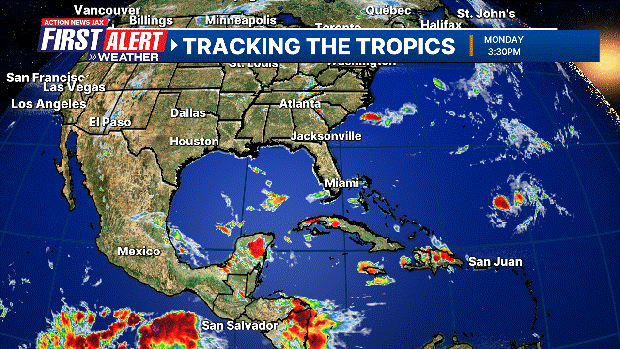



East Atlantic:




Mid & upper level wind shear (enemy of tropical cyclones) analysis (CIMMS). The red lines indicate strong shear:
Water vapor imagery (dark blue indicates dry air):

Deep oceanic heat content over the Gulf, Caribbean & tropical Atlantic. Brighter colors = warmer temps.:

Sea surface temps.:

Sea surface temp. anomalies:

SE U.S. surface map:
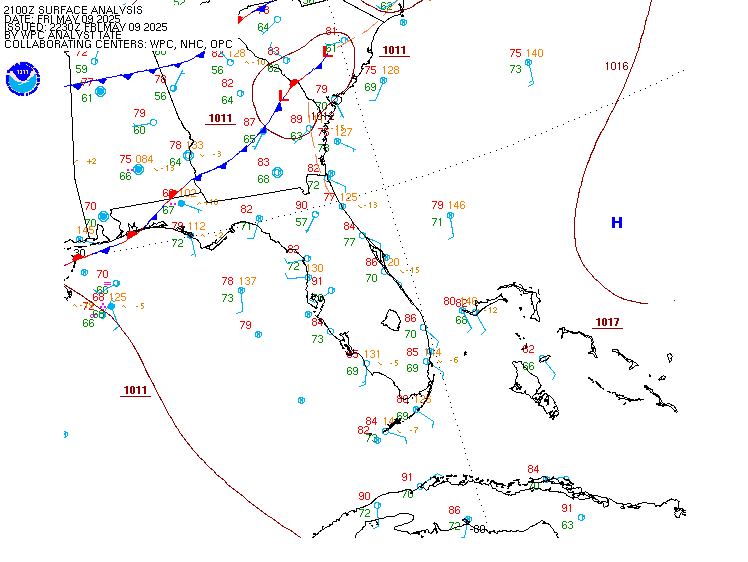
Surface analysis centered on the tropical Atlantic:
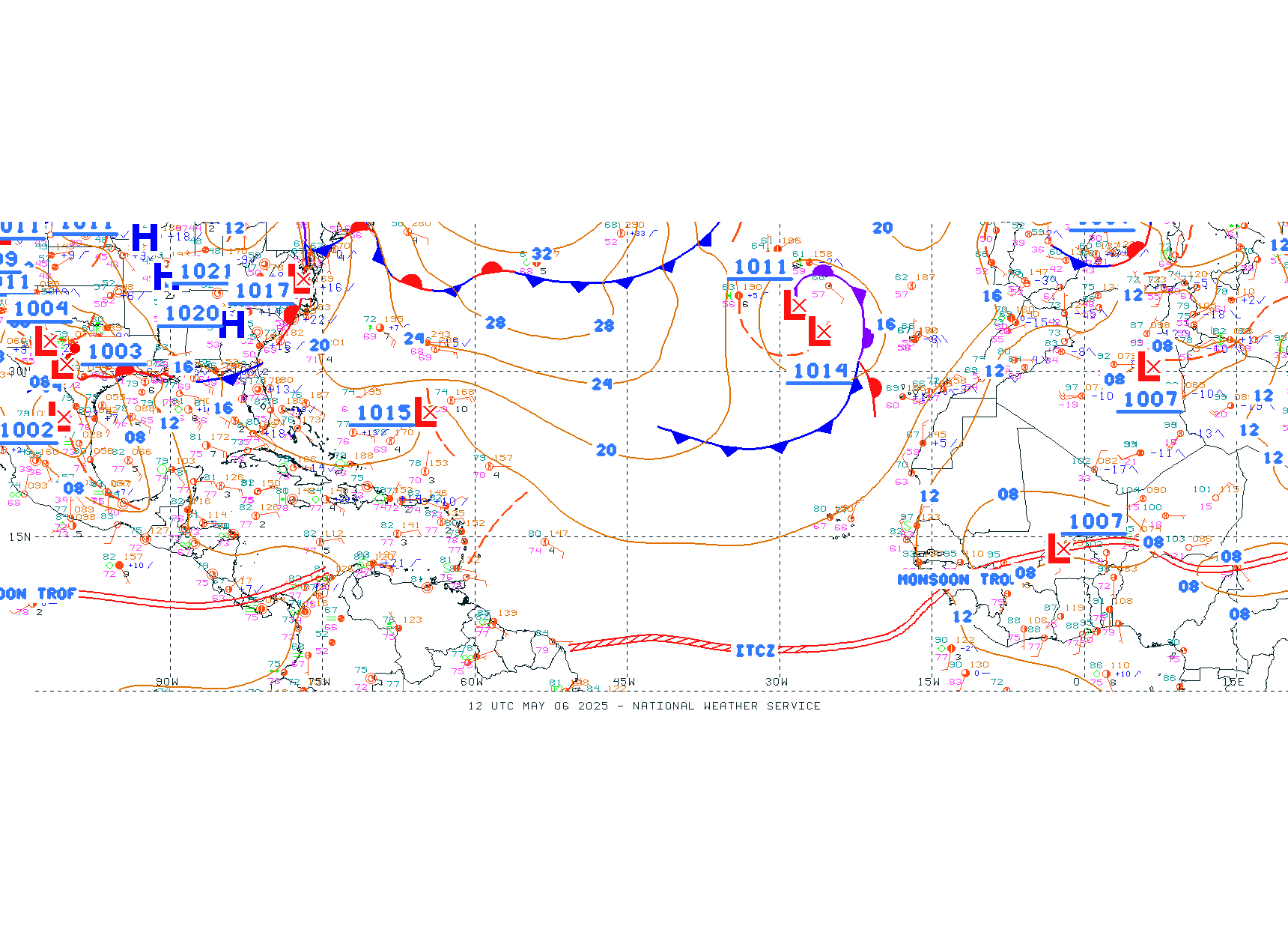
Surface analysis of the Gulf:

Caribbean:

Atlantic Basin wave period forecast for 24, 48, 72 & 96 hours respectively:
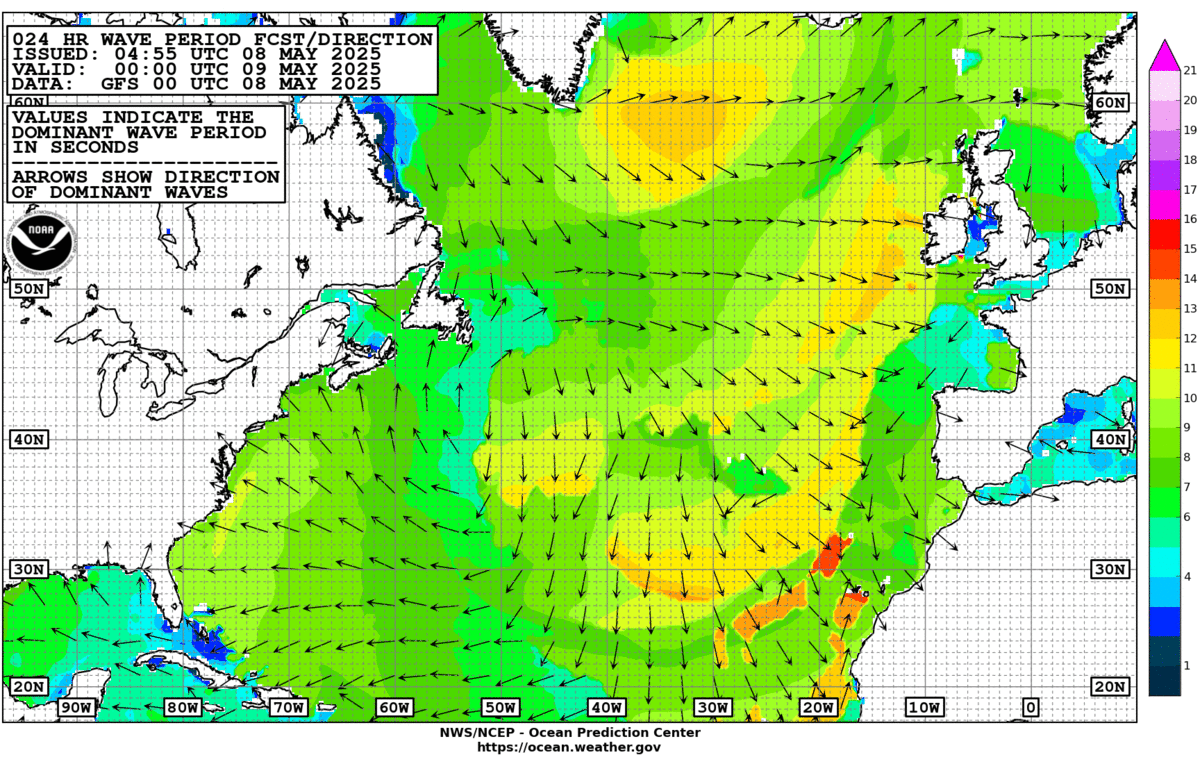
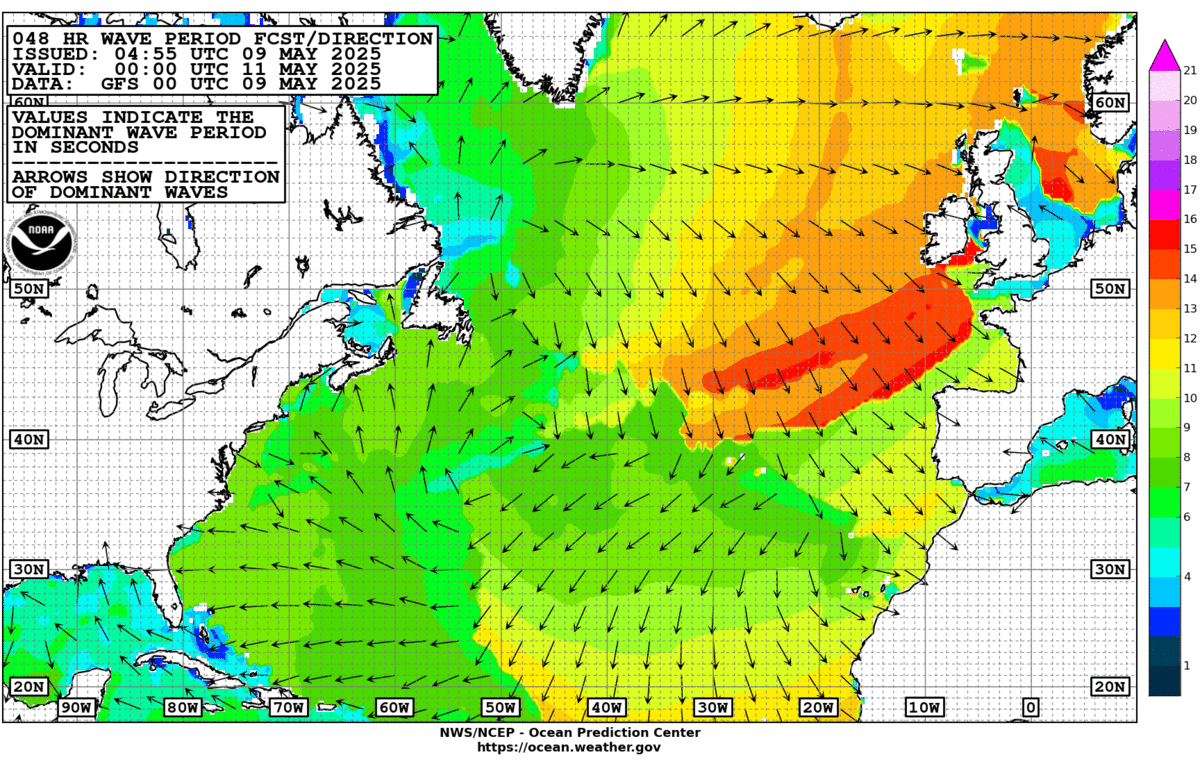
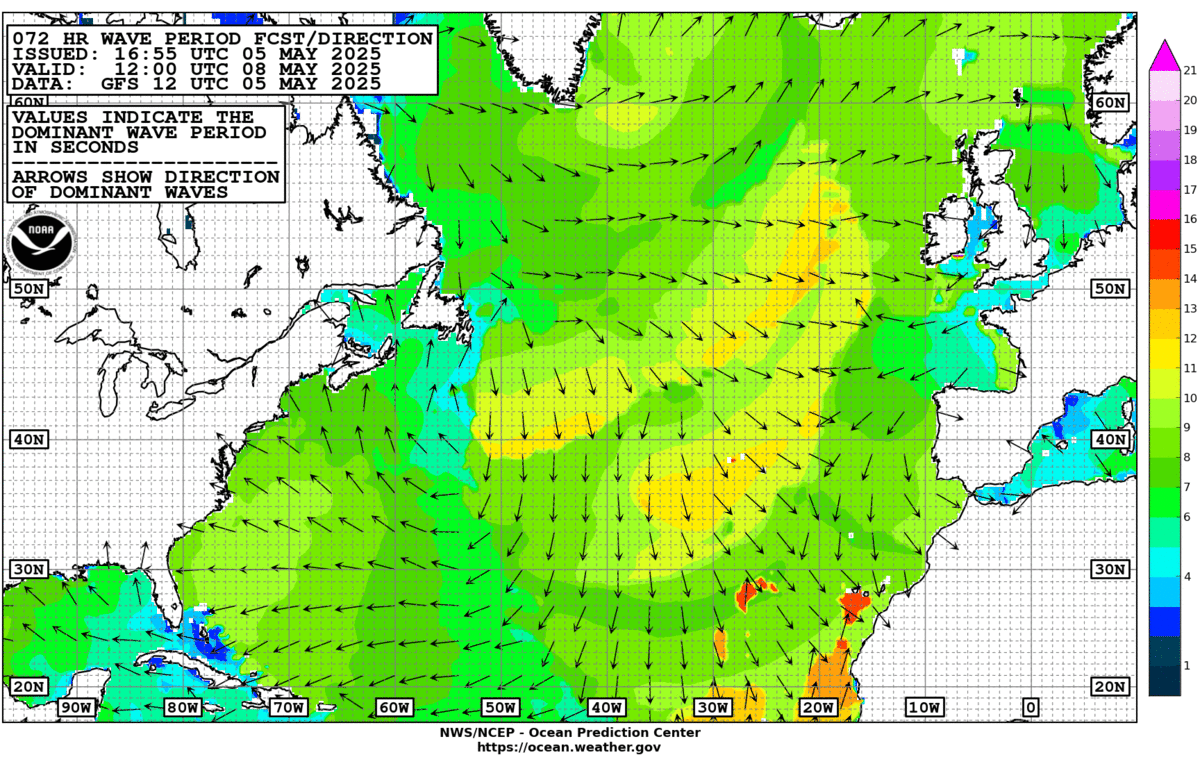
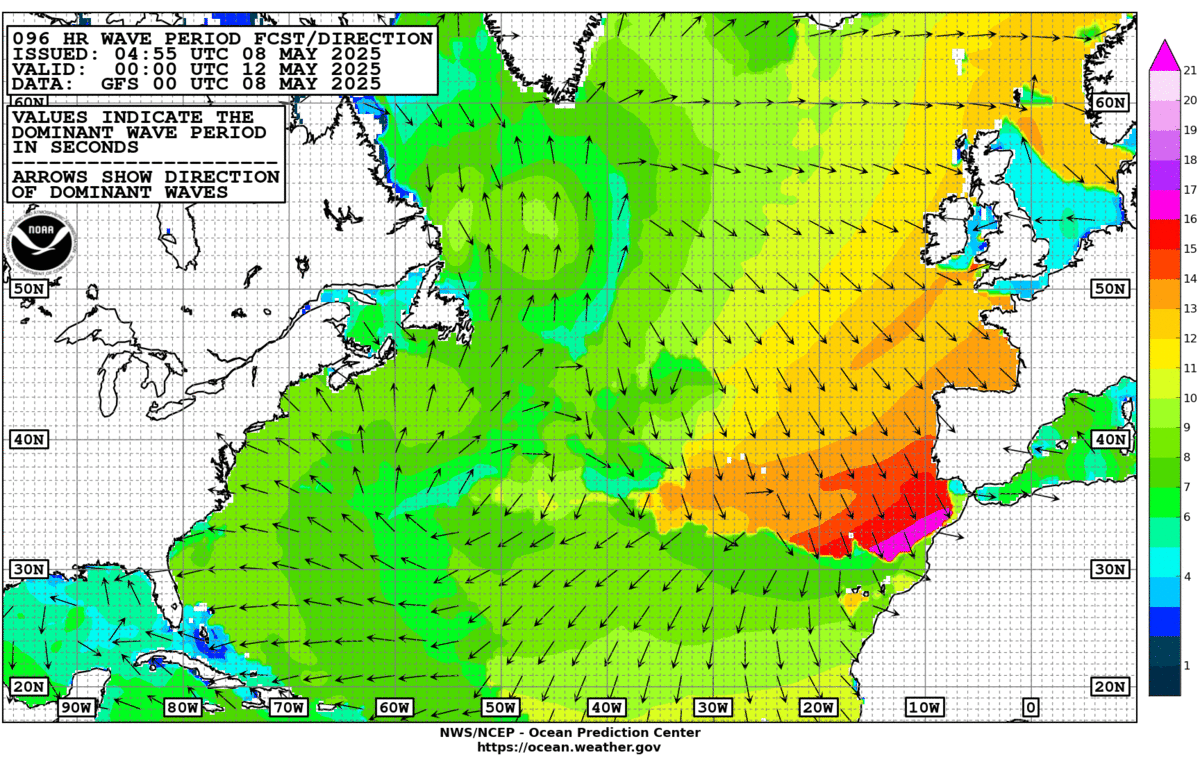

This past spring I visited the west coast of Florida - from Cedar Key to Tampa Bay - to see how the area is recovering from the very rough ‘24 hurricane season namely Helene & Milton:
East & Central Pacific:

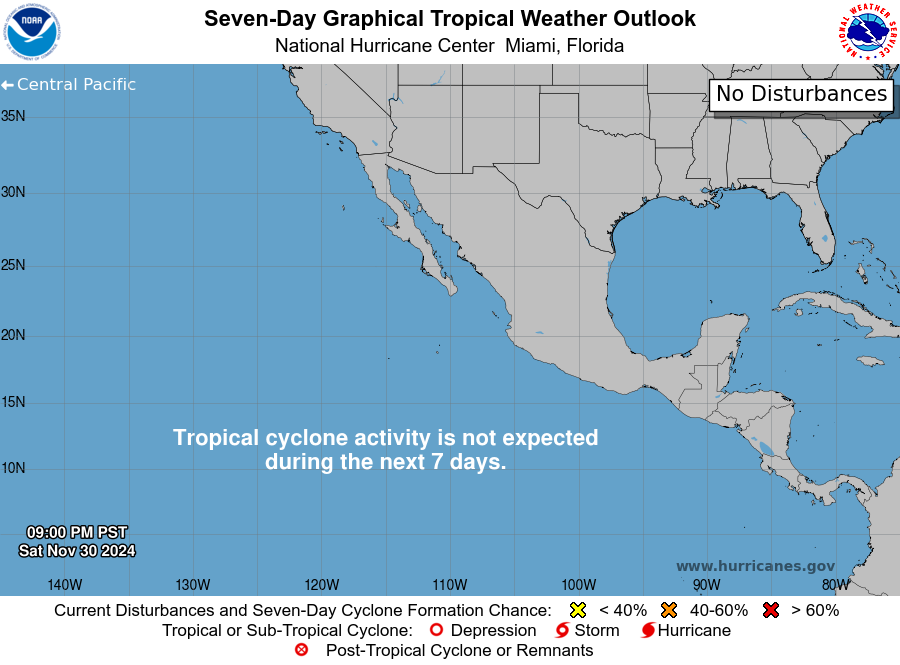



Central Pacific:
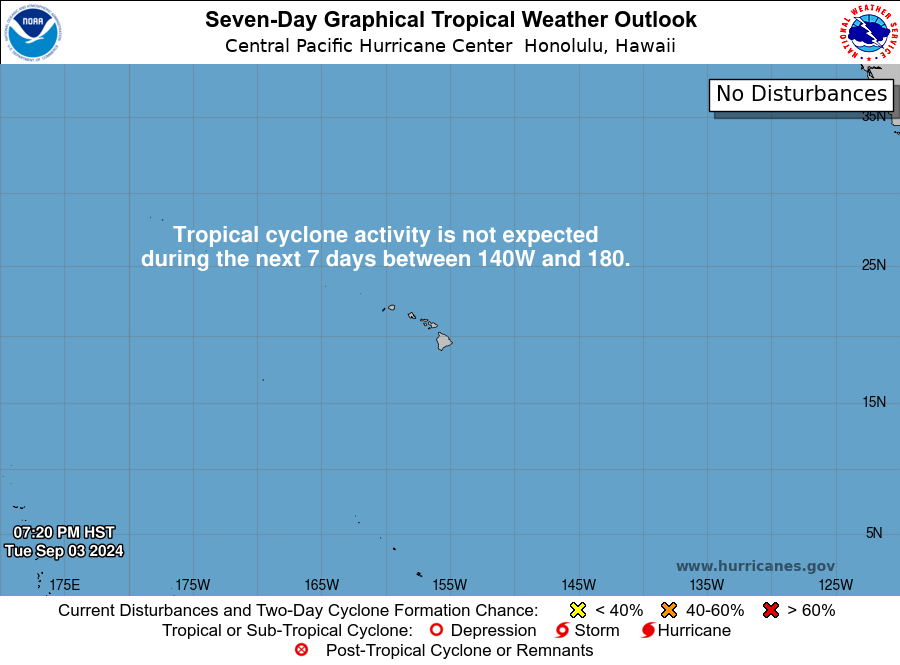
Hawaii satellite imagery:

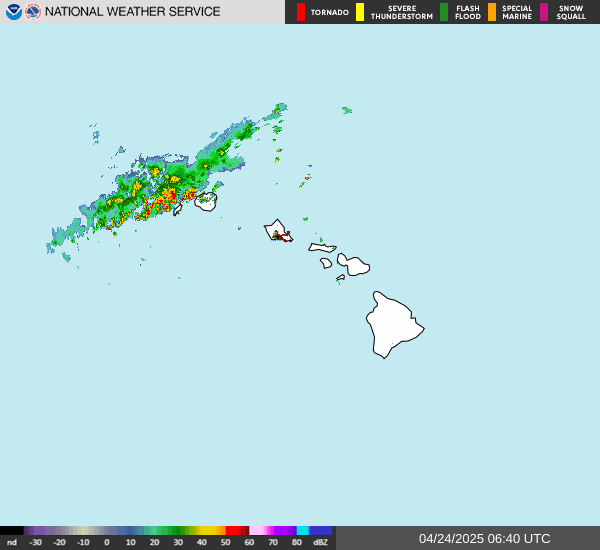
West Pacific:
Global tropical activity:
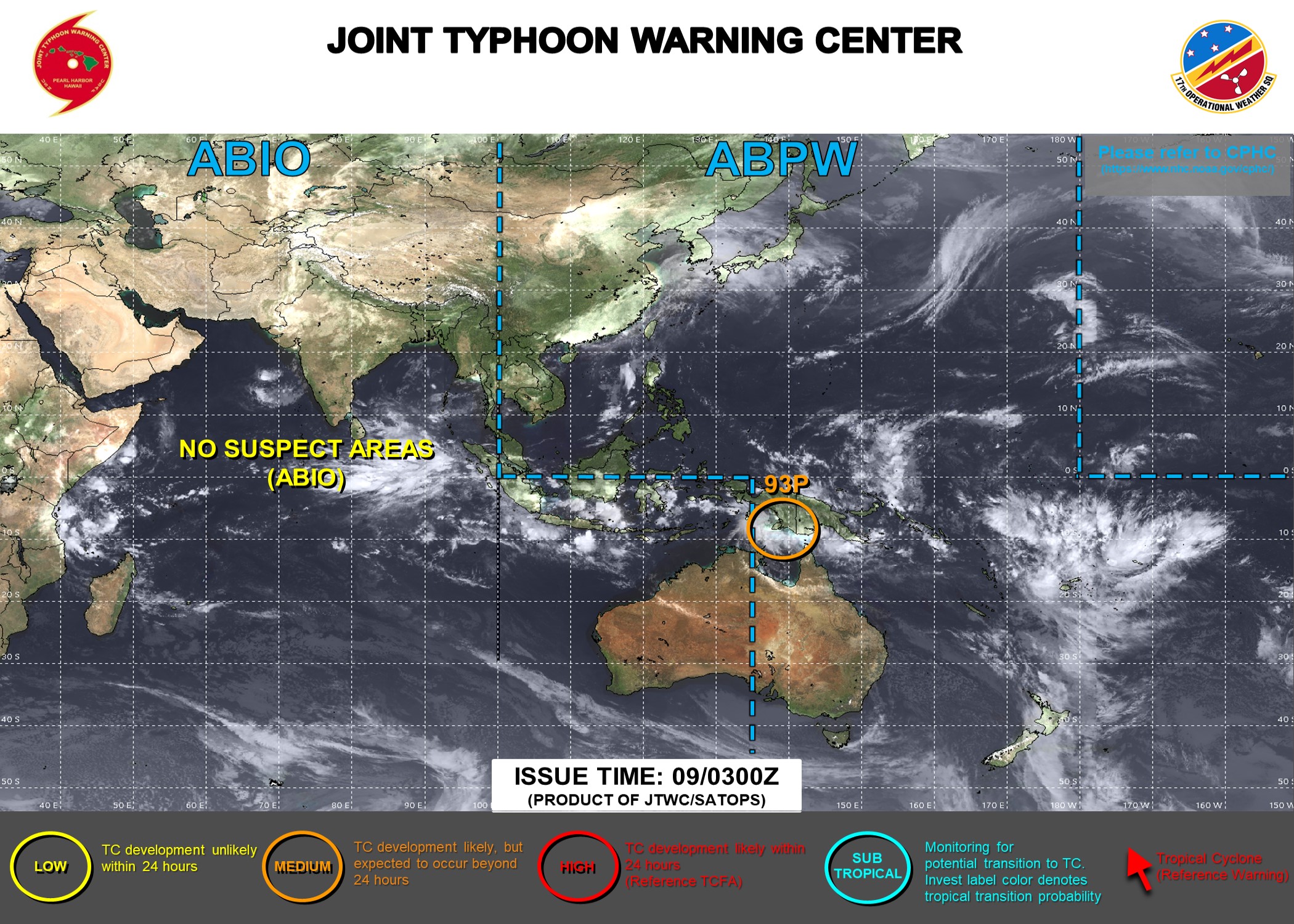
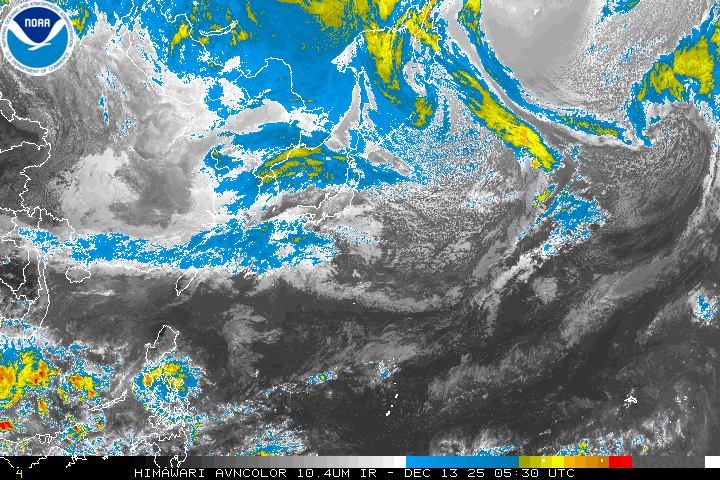


Cox Media Group



